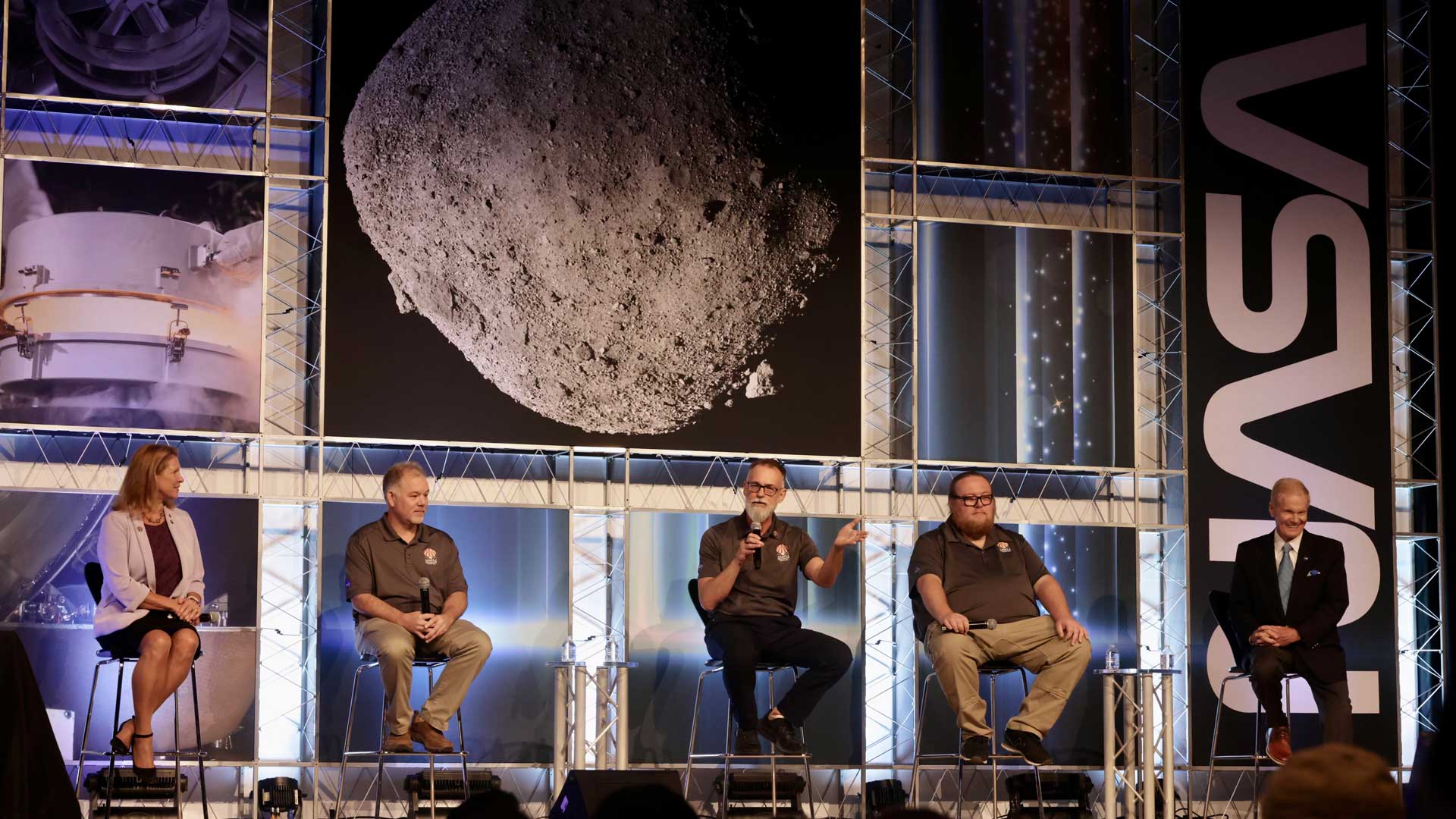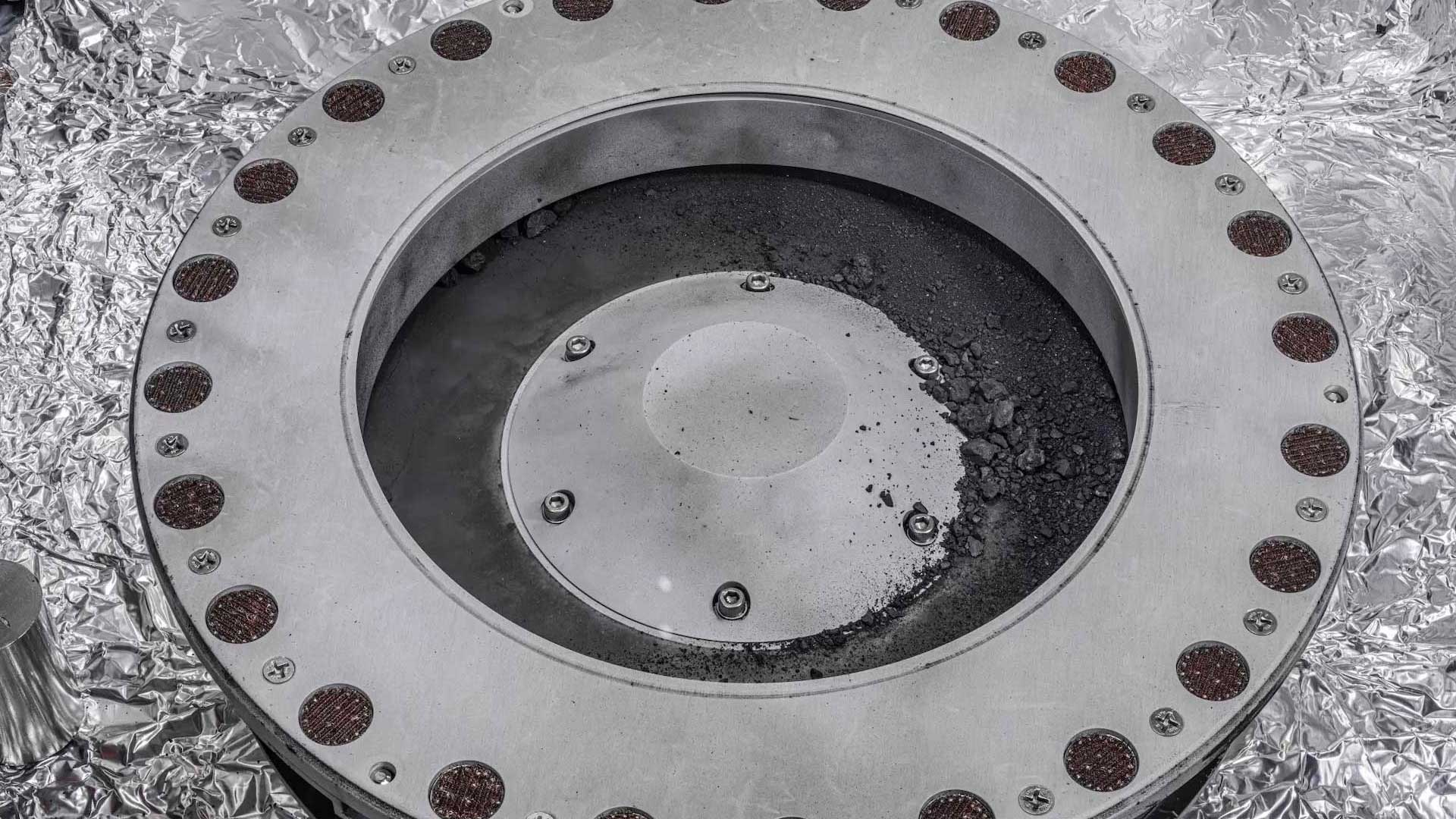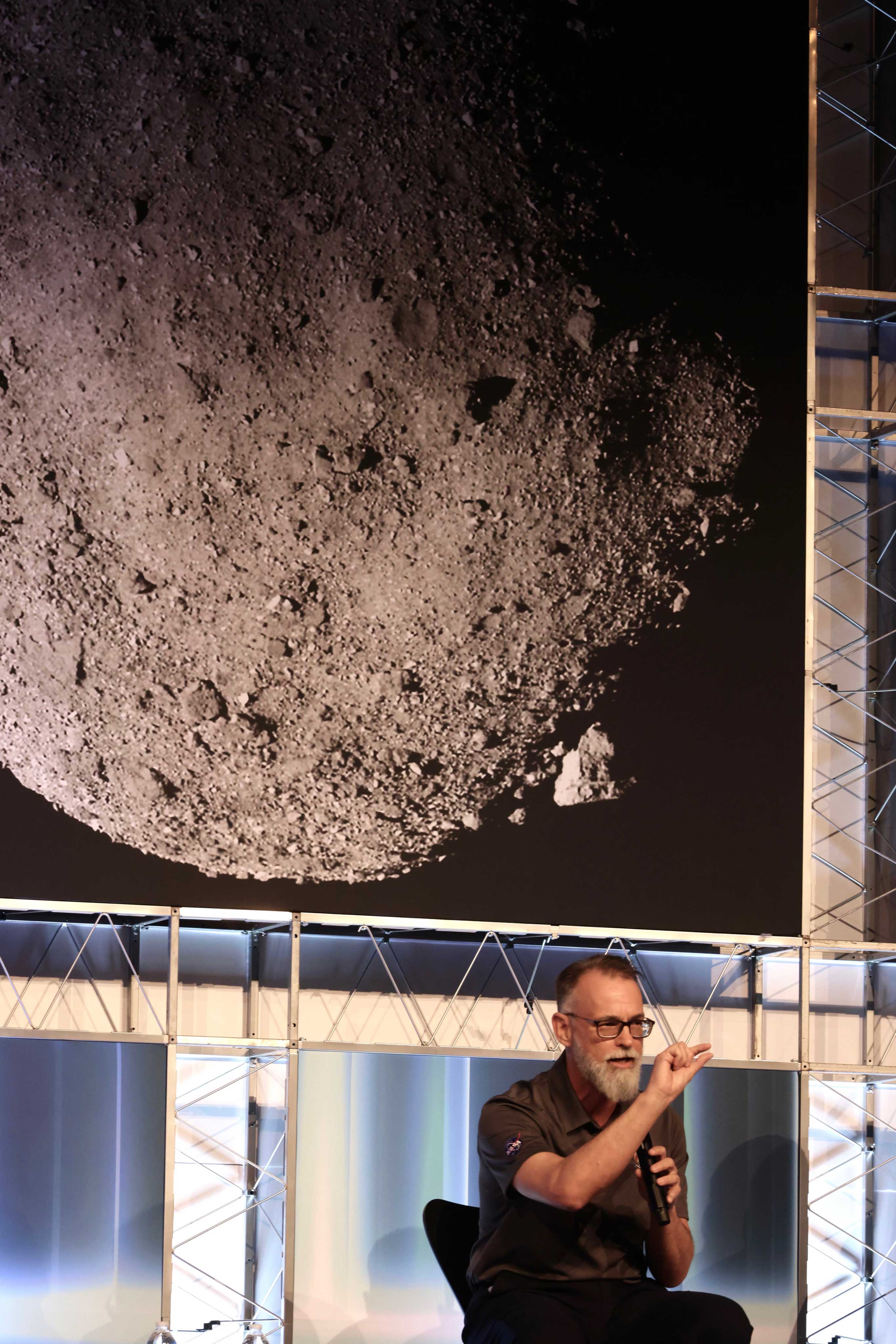 From left to right, NASA's Science Mission Directorate's Planetary Science Division director Lori Glaze, OSIRIS-REx sample analysis lead Daniel Glavin, OSIRIS-REx principal investigator and University of Arizona Regents Professor of Planetary Sciences Dante Lauretta, OSIRIS-REx deputy curation lead Francis McCubbin and NASA Administrator Bill Nelson speak during a press conference announcing the first discoveries from the Bennu asteroid sample at NASA's Johnson Space Center on Oct. 11, 2023.
From left to right, NASA's Science Mission Directorate's Planetary Science Division director Lori Glaze, OSIRIS-REx sample analysis lead Daniel Glavin, OSIRIS-REx principal investigator and University of Arizona Regents Professor of Planetary Sciences Dante Lauretta, OSIRIS-REx deputy curation lead Francis McCubbin and NASA Administrator Bill Nelson speak during a press conference announcing the first discoveries from the Bennu asteroid sample at NASA's Johnson Space Center on Oct. 11, 2023.
A 4.5 billion-year-old asteroid sample is now showing evidence of high-carbon content and water, which are indicators of what may have been needed to sustain life on Earth.
The sample comes from the asteroid Bennu and was brought to Earth by NASA’s University of Arizona-led OSIRIS-REx mission. OSIRIS-REx first launched in 2016, finally returning back home last month.
“It's been a very exciting set of weeks. When we first opened the science canister, we saw that there was abundant fine grain, black asteroid dust,” Principal Investigator and UA Regents’ Professor Dante Lauretta said Wednesday morning.
 A view of the outside of the OSIRIS-REx sample collector. Sample material from asteroid Bennu can be seen on the middle right. Scientists have found evidence of both carbon and water in initial analysis of this material. The bulk of the sample is located inside.
A view of the outside of the OSIRIS-REx sample collector. Sample material from asteroid Bennu can be seen on the middle right. Scientists have found evidence of both carbon and water in initial analysis of this material. The bulk of the sample is located inside.
The team has been able to verify that Bennu is dominated by water-bearing clay minerals and iron minerals that indicate a water-rich environment.
“Perhaps most exciting, the sample contains about 4.7% by weight carbon, which is obviously the essential element for all life on Earth and central to our astrobiology investigations,” Lauretta told reporters.
One of the main mission requirements was to acquire at least 60 grams of surface material from the asteroid.
However, when the spacecraft arrived back, the team needed to adapt how it would weigh the sample collected after noticing that trying to weigh the entire sample would risk losing material due to a leak that happened in the spacecraft. Lauretta estimates they have about 250 grams of material, but 101 grams of that weight are still undetermined as they continue verifying the weight.
 VIEW LARGER Dante Lauretta, OSIRIS-REx principal investigator and University of Arizona Regents Professor of Planetary Sciences, speaks during a press conference announcing the first discoveries from the Bennu asteroid sample at NASA's Johnson Space Center on Oct. 11, 2023.
VIEW LARGER Dante Lauretta, OSIRIS-REx principal investigator and University of Arizona Regents Professor of Planetary Sciences, speaks during a press conference announcing the first discoveries from the Bennu asteroid sample at NASA's Johnson Space Center on Oct. 11, 2023.
Another factor for its delay is the sheer amount of material they received back. Bonus material covered the outside of the collector head, canister lid, and base.
“Nobody is more anxious than I am to get that mass number, but I'm practicing my patience,” Lauretta said. “I'm fully respectful of the need to do this carefully. Because it's not just about the science program on OSIRIS REx, it's about the future integrity of the entire collection.”
Those from the Astromatierals Research and Exploration Science team will manage the distribution of samples to scientists across the world in a new NASA laboratory, deemed the OSIRIS-REx Sample Curation Laboratory at the Johnson Space Center in Houston.
The mission team still needs to open the science canister, but will only move towards that step once they are confident they have collected everything on the spacecraft’s sampling arm.
In any case, the mission has brought home the biggest carbon-rich sample ever delivered to Earth. These samples are expected to give a better idea of the origins of life on Earth.

By submitting your comments, you hereby give AZPM the right to post your comments and potentially use them in any other form of media operated by this institution.